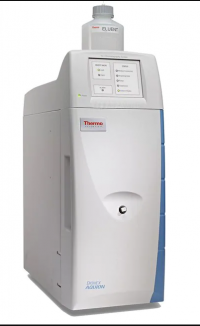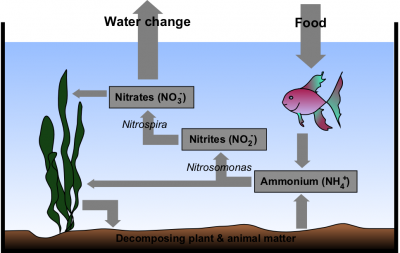Difference between revisions of "Ion Chromatography"
Jump to navigation
Jump to search
| (One intermediate revision by one other user not shown) | |||
| Line 1: | Line 1: | ||
Intro statement | Intro statement | ||
| + | From [https://en.wikipedia.org/wiki/Ion_chromatography wikipedia]... | ||
| + | |||
| + | Ion chromatography (or ion-exchange chromatography) is a chromatography process that separates ions and polar molecules based on their affinity to the ion exchanger. It works on almost any kind of charged molecule—including large proteins, small nucleotides, and amino acids. However, ion chromatography must be done in conditions that are one unit away from the isoelectric point of a protein.[1] | ||
==Instrument== | ==Instrument== | ||
[[File:IC.PNG|200px]] | [[File:IC.PNG|200px]] | ||
| Line 10: | Line 13: | ||
The water chemistry of a fish tank is critical to the well being of tank inhabitants. Fish food is consumed and converted to waste products. These waste products include ammonia, nitrite, and nitrate. | The water chemistry of a fish tank is critical to the well being of tank inhabitants. Fish food is consumed and converted to waste products. These waste products include ammonia, nitrite, and nitrate. | ||
| − | + | ||
| + | [[File:fish.png|400px]] | ||
Latest revision as of 20:05, 25 November 2019
Intro statement
From wikipedia...
Ion chromatography (or ion-exchange chromatography) is a chromatography process that separates ions and polar molecules based on their affinity to the ion exchanger. It works on almost any kind of charged molecule—including large proteins, small nucleotides, and amino acids. However, ion chromatography must be done in conditions that are one unit away from the isoelectric point of a protein.[1]
Instrument

Projects
Fish Tank
The water chemistry of a fish tank is critical to the well being of tank inhabitants. Fish food is consumed and converted to waste products. These waste products include ammonia, nitrite, and nitrate.
